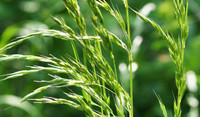Post-emergence weed control in winter wheat
But of course, any additional treatments must only be applied when conditions are suitable: don’t be tempted to apply any crop protection products when fields are water-logged or drains are running freely as this could compromise crop safety, reduce herbicide efficacy and might result in the contamination of water courses.
Stacking actives gives the best results
Trials carried out by and on behalf of ADAMA have shown that using a selection of different active ingredients from a range of modes of action gives the best possible results on difficult to control grassweeds (notably back-grass and ryegrass).
The use of as many as six different active ingredients will improve control levels where target grassweeds express a metabolic resistance to herbicides.
While the application of such a high number of active ingredients is feasible (from a crop safety perspective), applying so many products isn’t necessarily financially viable, and such a large stack of products can elevate the risk of younger crops being adversely affected.
It can therefore pay to split the stack of residuals, not only in order to protect the crop’s integrity, but also to maximise the herbicide programme’s efficacy: making separate applications allows a higher loading of the different active ingredients to be applied safely and extends the window of activity thereby improving the control of later germinating grassweeds.
Peri-em or early post-em: which is best?
There are two schools of thought when it comes to the best time to apply post-emergence residual herbicides in cereals:
- 1. At the peri-emergence stage, just as seedlings are about to emerge;
- 2. At the early post-emergence timing: within four weeks of drilling when the crop has one to two leaves.
The peri-emergence timing works well in trials, but, in practice, poses an elevated risk to the crop because it can be difficult to accurately time applications on a farm scale in conjunction with good spray conditions. As such, the early post-emergence timing is preferable, but the actual timing of application will obviously be dictated by weather conditions and other on-farm priorities and workloads.
In terms of which herbicide(s) to use at either of these timings, it is advisable to select active ingredients which weren’t used at the pre-emergence timing.
It is also important to select products based on their efficacy versus the weeds being targeted: some weeds will have successfully emerged despite the application of pre-emergence herbicides, so it may be necessary to use a contact herbicide as well as a product which will be taken up via the root system.
Towering over weeds
In terms of specific products, Tower’s three-way combination of chlorotoluron (250g/l), diflufenican (40g/l) and pendimethalin (300g/l) makes it ideally suited to the post-emergence timing: in trials its early post-emergence activity is equal to its impressive pre-emergence performance.
This is, in large, due to its unique ingredient, chlorotoluron, which is taken up by foliage and roots. Likewise, the pendimethalin contained within Tower also boasts some foliar absorption although its primary mode of action is via root uptake. Meanwhile, the diflufenican element within Tower provides additional efficacy via contact and residual activity.
At its full rate, Tower provides 600gai/ha of pendimethalin, allowing it to be used after a pre-emergence treatment of 1,320 gai/ha.
Sailing against the tide of later emerging weeds
An additional active ingredient in the form of prosulfocarb (as Topsail) will further enhance post-emergence weed control, with 3.0l/ha in wheat or 2.0l/ha in barley/rye giving good efficacy. An alternative fourth active to consider is flufenacet which, at 120gai/ha, has been proven to give valuable additional efficacy.
Singing in the rain
In circumstances where wet conditions continue to prevent any herbicide treatments from being applied until much later into the season (for example as late as February, the inclusion of Anthem (400 g/l pendimethalin) brings useful residual activity to programmes reliant on ALS herbicides such as Broadway Star and Atlantis. Anthem also offers the added advantage of having an SC formulation which gives higher efficacy against grass weeds compared to CS preparations of the same active ingredient.
Latest articles

Powering up slug control: the importance of mould resistance

Powering up slug control: pellet timing and baiting point density are critical
